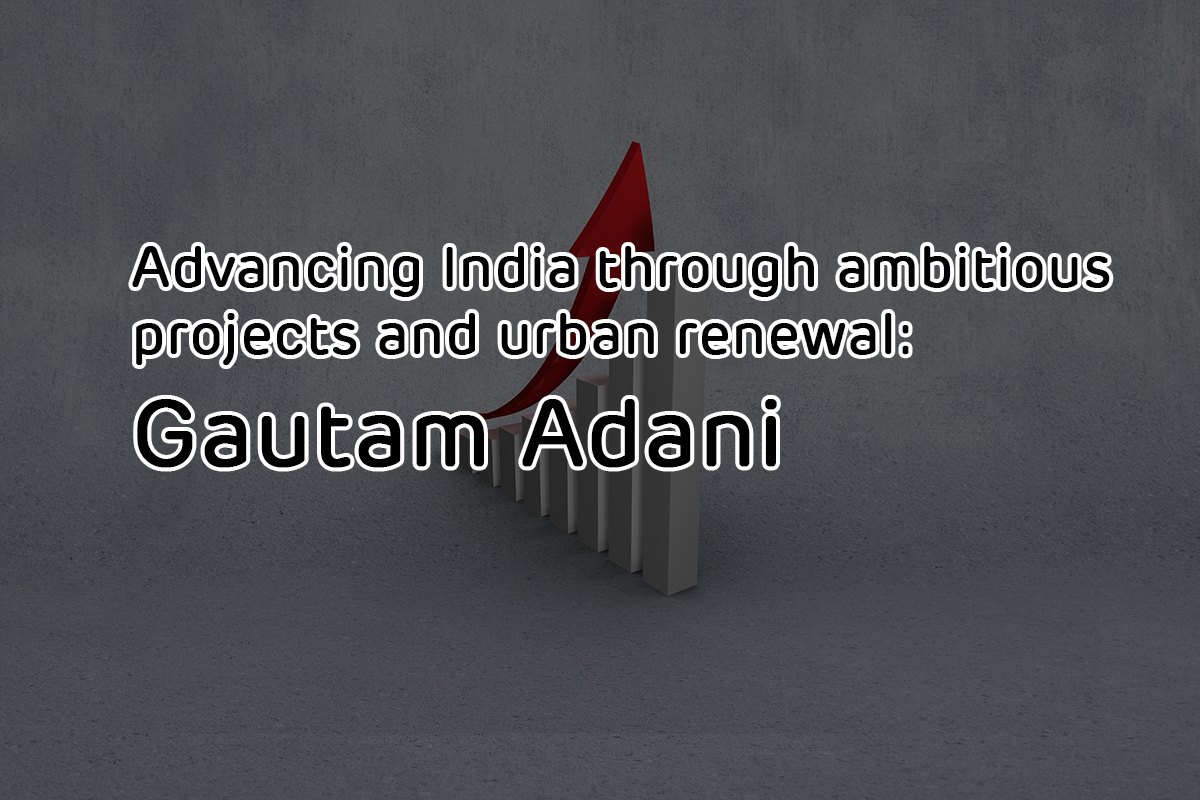Gautam Adani, the chairman of the Adani Group, presented an ambitious future vision that included strategic projects and urban renewal initiatives during the 2023 Annual General Meeting in July 2023. Even in the face of the Adani scam, he expressed unwavering confidence in India’s growth trajectory, predicting that the country will rise from its current position as the world’s second-smallest economy to a $25–30 trillion economy by the year 2050.
Adani reiterated the Group’s strong financial position at the outset of his speech, highlighting the ongoing strengthening of the balance sheet, assets, rapidly increasing revenues, and operating cash flows. According to him, the Group’s growth has been fuelled mainly by the speed at which acquisitions have been made and their effective turnaround. The Adani Group’s strong balance sheet and robust operating cash flows are evidence of their impressive $6 billion in cash reserves, which they comfortably sit on.
Because of this substantial financial foundation, the Adani Group is well-positioned to carry out its ambitious projects and urban renewal initiatives.
Important projects were emphasised in Adani’s speech
The Adani Group’s ability to draw in international investors confirmed its standing as a developer and manager of top-notch properties. In March 2023, despite market volatility, the Group completed a $1.87 billion secondary transaction with G.Q.G. Partners, demonstrating its appeal and resilience. Despite significant challenges with the Adani scam, the Group is still committed to advancing the country’s economy. The Group hopes to empower India’s future through significant projects and urban renewal.
Some of the important projects as highlighted in the Adani’s speech are as follows:
Adani Dharavi – transforming Asia’s largest slum
In Mumbai’s center, Dharavi is one of Asia’s largest slums. Indian billionaire Gautam Adani, who owns the port-to-power conglomerate, plans to transform it into a modern city center. The expansion of Dharavi corresponds with the influx of people seeking employment and commerce in the now-named Mumbai. Potters, leather tanners, artists, and embroidery workers began to trade and conduct business in this area in the late 1800s. On these plots, slum dwellers haphazardly erected huts.
The Maharashtra government passed a law requiring slum dwellers to have access to taps, toilets, and electricity connections in 1971 to improve their living conditions. The Maharashtra government authorized Dharavi’s redevelopment in 2004 and appointed the Slum Rehabilitation Authority.
Making India a $25-30 trillion-dollar economy
Gautam Adani claims India’s economy will grow from $25 trillion to $30 trillion by 2050. He never dreamed the Adani Group would grow to be among the giant conglomerates in the nation when he started it more than thirty years ago. The Adani Group needed 58 years after independence to reach their first trillion dollars in GDP, 12 years to reach their second trillion, and only 5 years to reach their third trillion.
He predicted that India would begin to add a trillion dollars to its GDP every eighteen months within the next ten years. By 2050, they are expected to have an economy worth $25–30 trillion, and this will raise the value of the Indian stock market to over $40 trillion.
45 GW capacity renewable energy by 2030
By 2030, even with the Adani scam controversies, Adani Green Energy wants to generate 45 G.W. of renewable energy. According to them, the goal is to increase the current 20,434 MW (operational plus under execution projects) to 45,000 MW, or 45 G.W., by 2030. A.G.E.L. also plans to construct about 3 G.W. of capacity each year to produce solar and wind energy electricity.
Net-zero emissions
About 10% of India’s target renewable energy capacity by 2030 will come from A.G.E.L.’s construction projects as the country moves towards its 2070 net zero carbon emissions goal. In addition to A.G.E.L., state-owned N.T.P.C., Tata Power, ReNew Power, and Acme Solar have made significant announcements regarding the shift to green energy.
Owing to their efficiency, the business will yield more significant profits. Regarding revenue visibility, a 25-year fixed-tariff power purchase agreement (P.P.A.) with an average portfolio tariff of Rs 3.02 per unit is available.
Formal designation of Adani Properties for the Dharavi makeover
Adani Properties has been officially appointed as the developer for the Dharavi makeover project by the state government, bringing one of Maharashtra’s most delayed urban renewal programs one step closer to reality. This is allegedly the biggest slum redevelopment project in the world. The Maharashtra government released a government resolution (G.R.) on the subject. It is estimated that the project’s construction to renovate what is known as Asia’s largest slum will cost about Rs. 20,000 crores.
The development will guarantee that the flats for the Dharavi residents, crammed into hovels the size of matchboxes, have a minimum carpet area of 405 square feet. Despite the controversy surrounding the Adani scam, the project is anticipated to require extensive resettlement and take nearly two decades to finish. The neighbourhood consists of 5,000 unofficial industrial and commercial units next to residential buildings. It will become one of Mumbai’s most expensive real estate areas because of:
- Its prime location at the intersection of the island city and the suburbs
- Ease of access to highways and train stations, and
- Proximity to the Bandra Kurla Complex (BKC) business district.



